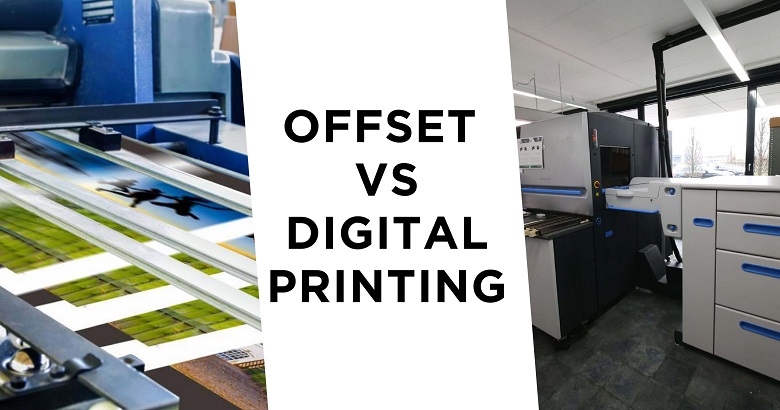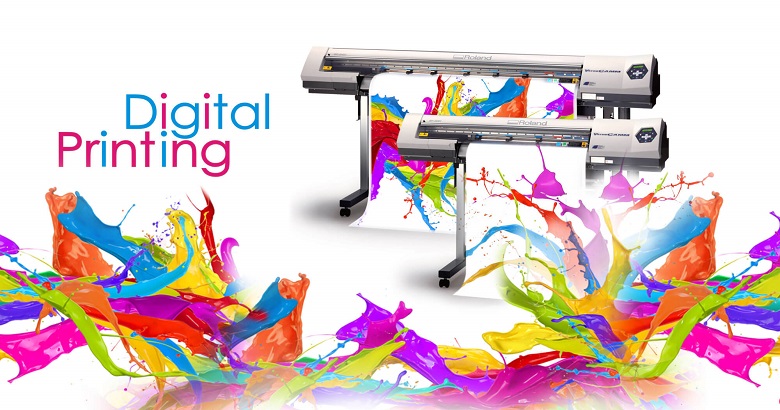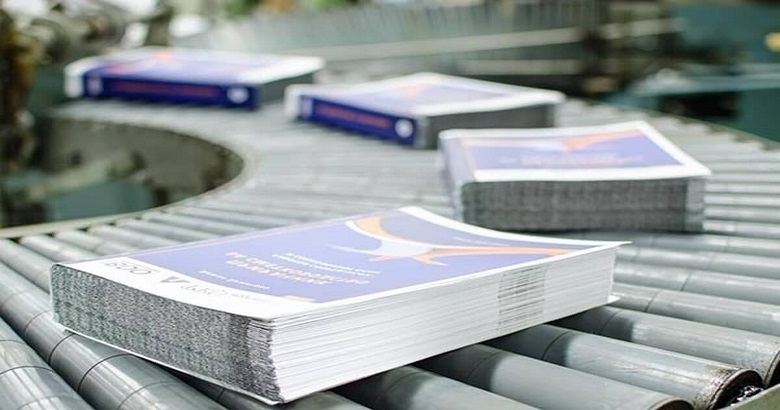In the labyrinthine world of book printing, where myriad methods vie for attention, determining the ideal approach can be as intricate as the stories within the pages. Whether you’re a seasoned publisher, a budding author, or an avid reader with a penchant for the tangible, the printing method profoundly impacts the final product’s quality, cost, and overall appeal. In this extensive guide, we journeyed through the diverse landscape of printing techniques, unravelling the nuances and intricacies to unearth the quintessential question: What is the best method for high-quality book printing?
Delving into the Dichotomy: Offset Printing Versus Digital Printing

Two stalwart contenders lie at the nexus of traditional craftsmanship and modern technology: offset printing and digital printing. Each high-quality book printing method boasts advantages and drawbacks, catering to distinct needs and preferences.
Offset Printing:
Originating from the age-old art of lithography, offset printing is a stalwart pillar in high-quality book printing production. Its meticulous process involves transferring ink from a plate onto a rubber blanket and then onto the printing surface, culminating in crisp, high-fidelity reproductions.
Advantages of Offset Printing Abound:
- Print Quality: Offset printing’s meticulous nature yields impeccable results, particularly for projects demanding intricate designs, vibrant colours, or high-resolution images.
- Economies of Scale: As the volume of prints escalates, the per-unit cost diminishes, making offset printing exceptionally cost-effective for large print runs.
- Versatility in Materials: Offset printing affords publishers unparalleled flexibility in material selection, with a wide array of paper options, finishes, and coatings available.
However, offset printing is not without its challenges:
- Protracted Setup Time: Offset printing’s elaborate setup process, which involves plate creation, press setup, and colour calibration, makes it less conducive to swift turnarounds or short print runs.
- Initial Setup Costs: The upfront expenses associated with plate production and press setup can be prohibitive, particularly for small-scale publishers or independent authors.
- Limited Flexibility: Once the printing press is in motion, making alterations or revisions becomes cumbersome and costly, necessitating meticulous prepress preparation.
Digital Printing

In stark contrast to its analogue counterpart, digital printing leverages the power of digital technology to transfer images directly onto the printing substrate. This streamlined, high-quality book printing process provides unparalleled flexibility, making digital printing a preferred choice for projects demanding agility and customisation.
Advantages of Digital Printing Include:
- Rapid Turnaround Times: Digital printing enables swift production turnarounds with minimal setup requirements and no need for plate creation. This makes it ideal for on-demand printing or tight deadlines.
- Cost-Effectiveness for Short Runs: No setup fees and low minimum print quantities render digital printing economically viable for small print runs or niche publications.
- Customisation and Personalization: Digital printing facilitates variable data printing, allowing for unique content, personalised messages, or tailored editions to cater to specific audiences.
- Nonetheless, digital printing presents its own set of limitations
- Slightly Diminished Print Quality: While advancements in digital printing technology have narrowed the gap, discerning eyes may detect subtle discrepancies in print quality compared to offset printing, particularly in large-scale productions.
- Material Restrictions: The range of paper options, finishes, and coatings available for digital printing may be more limited than that for offset printing, restricting choices for premium or specialised publications.
- Cost Prohibitions for Large Runs: While cost-effective for short print runs, digital printing becomes less economical as print volume escalates, making it less suitable for high-volume projects.
Explore Beyond the Mainstream: Alternative Printing Methods
During offset and digital printing reign supreme in the high-quality book printing arena, several alternative methods cater to niche markets, specialised requirements, or avant-garde endeavours.
- Print-On-Demand (POD): Revolutionizing the publishing landscape, print-on-demand technology empowers publishers to print books as orders are received, eliminating excess inventory and mitigating financial risk. This approach benefits self-publishers, niche markets, or experimental projects with unpredictable demand.
- Web Offset Printing: Favored for high-volume productions such as newspapers, magazines, or mass-market paperbacks, web offset printing employs a continuous roll of paper fed through the press, resulting in expedited production speeds and reduced unit costs. While less common in traditional book publishing, web offset printing offers unparalleled efficiency for projects demanding sheer volume.
- Digital Inkjet Printing: Traditionally synonymous with wide-format printing, digital inkjet technology has significantly progressed in book production, offering high-quality results and variable data capabilities. This method is well-suited for short print runs, personalised editions, or projects requiring quick turnarounds.
- Flexographic Printing: Predominantly employed in packaging materials and labels, flexographic printing boasts remarkable versatility, making it an intriguing option for specialised book projects. Flexographic printing offers boundless creative possibilities, from children’s books adorned with tactile textures to graphic novels featuring vivid illustrations.
Deciphering the Conundrum: Selecting the Optimal Printing Method for Your Book

Amidst the plethora of high-quality book printing methods available, selecting the optimal approach for your book requires a judicious examination of various factors and considerations. By navigating the labyrinth of options with astute discernment, you can chart a course towards realising your publishing aspirations.
Consider the following pivotal factors when deliberating your printing method:
- Print Quantity: For large-scale productions commanding economies of scale, offset printing reigns supreme, offering unparalleled cost-effectiveness. Conversely, digital printing is the frontrunner for short print runs or on-demand projects, minimising setup costs and mitigating financial risk.
- Print Quality: If your book embodies intricate designs, vibrant imagery, or nuanced colour palettes, offset printing ensures the epitome of print quality. However, digital printing may suffice for projects of a more modest scope or less demanding specifications, offering satisfactory results at a fraction of the cost.
- Turnaround Time: In the fast-paced realm of publishing, time is of the essence. Digital printing shines as the beacon of expediency, affording swift setup times and rapid production turnaround. Conversely, offset printing, with its elaborate setup process and protracted lead times, may pose challenges for projects demanding immediacy.
- Budget Constraints: As with any endeavour, fiscal considerations loom large in decision-making. Assess your budget constraints comprehensively, factoring in setup costs, unit costs, and ancillary expenses to determine your project’s most financially prudent printing method.
- Special Requirements: Scrutinize any unique or specialised requirements inherent to your project, such as customisations, variable data printing, or distinctive paper finishes. Certain printing methods may better accommodate these specifications, fostering the realisation of your creative vision with precision and finesse.
Conclusion
In book publishing, the choice of high-quality book printing method is a pivotal brushstroke, imbuing each page with a distinctive character and allure. Whether you opt for the time-honoured craftsmanship of offset printing or the dynamic versatility of digital printing, the journey towards realising your publishing aspirations unfolds with boundless possibilities.
As you traverse the labyrinth of printing methods, armed with insight and discernment, you may navigate with confidence and clarity, forging a path towards realising your literary endeavours. With each turn of the page, may your story unfold with grace and splendour, a testament to the unparalleled excellence of the printing craft.
Frequently Asked Questions
-
What factors should I consider when choosing between offset printing and digital printing for my book?
When deciding between offset printing and digital printing, consider factors such as print quantity, print quality, turnaround time, budget, and special requirements. Offset printing is ideal for large print runs requiring superior print quality, while digital printing offers cost-effectiveness and flexibility for short print runs or on-demand printing with quick turnaround times.
-
What is the advantage of print-on-demand (POD) technology for book printing?
Print-on-demand (POD) technology allows publishers to print books as orders are received, eliminating the need for large print runs and excess inventory. This approach is advantageous for self-publishers, niche markets, or projects with unpredictable demand, as it minimises financial risk and ensures efficient inventory management.
-
Can digital printing match the print quality of offset printing for books?
While digital printing has made significant advancements in print quality, particularly for short print runs, it may not always match the level of detail and colour accuracy achieved with offset printing, especially in large-scale productions. However, for projects with less demanding specifications or smaller quantities, digital printing can provide satisfactory results at a lower cost.
-
How can I ensure my book’s design and layout are optimised for the chosen printing method?
To optimise your book’s design and layout for the chosen printing method, work closely with a professional designer or prepress specialist who is familiar with the requirements and limitations of offset and digital printing. Ensure your files are correctly formatted, use high-resolution images, and consider factors such as bleed, trim size, and paper type to achieve the desired results.
-
Should I consider alternative printing methods besides offset and digital printing for my book project?
Yes, several alternative printing methods cater to specific needs and preferences, including web offset printing, digital inkjet printing, flexographic printing, and speciality options like foil stamping or embossing. Each method offers unique advantages and may suit niche markets, specialised projects, or creative endeavours requiring distinct printing effects.



